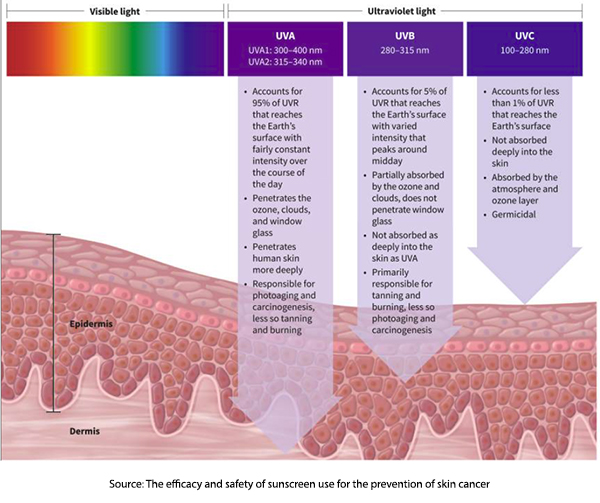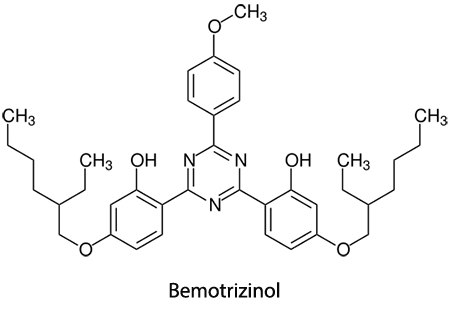As we bask in the anticipation of spring, a familiar cautionary whisper resurfaces – the age-old advice about the perils of too much sun exposure. Should we fear the sun? From its benefits and risks to the complexities of sunscreens and UV-protective clothing, an informed and balanced approach to sun exposure is our best bet.
Spring break is a chance for many of us to greet the sun, warmth, and the return of spring with its promise of summer. For some, the rush to the sun may raise a tiny voice in the back of our minds, reminiscent of our mothers, warning us about getting too much sun! Is that even possible? In the quest for a healthful glow, do we risk skin cancers or the voice warning to be filed away with not going in the water just after you eat?
UV light and skin cancer
 Skin cancers are among the most common cancers, and 80-90% are associated with exposure to sunlight, more specifically ultraviolet (UV) radiation. Cancers of the most superficial layer of skin are called squamous cell cancers, those of the layer just beneath basal cell cancers. Melanomas are cancers forming in the melanocytes, the cells responsible for our skin pigmentation (color), and are found in the deepest layer of the skin. These are termed cutaneous malignant melanomas because other melanomas can occur in areas not exposed to sunlight. While squamous and basal cell carcinomas are the most prolific, melanomas are the most lethal.
Skin cancers are among the most common cancers, and 80-90% are associated with exposure to sunlight, more specifically ultraviolet (UV) radiation. Cancers of the most superficial layer of skin are called squamous cell cancers, those of the layer just beneath basal cell cancers. Melanomas are cancers forming in the melanocytes, the cells responsible for our skin pigmentation (color), and are found in the deepest layer of the skin. These are termed cutaneous malignant melanomas because other melanomas can occur in areas not exposed to sunlight. While squamous and basal cell carcinomas are the most prolific, melanomas are the most lethal.
While the relationship of squamous and basal cell carcinomas to UV radiation is reasonably clear, that is not the case for melanoma, which remains an important but not the sole source of concern.
Despite the increased use of sunscreen, the first layer in photoprotection, cutaneous malignant melanoma continues to increase – the why remains unclear.
Sunscreens – the Warrior against the Light
These protections contain two forms of UV filtration: chemical and physical.
- Chemical filters are compounds that absorb UV radiation and subsequently release that energy as heat. [1]
- Physical filters that reflect UV radiation away from the skin. While early studies suggested these compounds, like titanium dioxide and zinc oxide, were physical barriers, their current formulations as micronized or nanoparticles are felt to “behave as semiconductor metals, which absorb ultraviolet light throughout most of the electromagnetic spectrum.”
A study of 903 adults in Australia showed a 24% reduction in skin aging over 4.5 years for those using sunscreen daily vs. episodically. This same population followed for an extended period, showed a decrease in squamous cell carcinomas by about 40% but no change in basal cell carcinomas. After 15 years, the incidence of melanoma was cut in half for those who applied sunscreen daily versus those who used it episodically.
Of course, for every chemical, there must be a concern. Experimental studies have demonstrated the absorption of those chemical filters. A review in Toxicology Reports on the neurotoxic effects of sunscreen’s active ingredients provides genotoxic effects and environmental accumulation that will keep lawyers busy for years despite the
“…reported adverse neurotoxic effects of UV filters [were] at concentrations substantially higher than those observed in environment and human tissues…”
In a study reported in JAMA, systemic concentrations greater than the FDA’s allowable 0.5 ng/mL were reached when sunscreen was applied as directed by the end of the first day of use. Of course, this involved only six subjects who applied the maximum coverage four times daily while remaining indoors. Another factor is that in real-world studies, sunscreen is most frequently underapplied, often in amounts affording little real protection.
A review by the Norwegian Medical Association considered sunscreen's impact on Vitamin D levels – low levels are risk factors for many diseases, including malignant melanomas. While sunscreen reduced Vitamin D levels experimentally, no significant effect was noted in real-world studies. And as they write,
“A Swedish study found that all-cause mortality was twice as high in individuals who avoided sun exposure compared to those who sunbathed the most. This cohort study thus suggests that avoiding sunbathing may be about as dangerous as smoking tobacco.” [emphasis added]
Protective Clothes - Cloaked in protection
While sunscreen is considered our first line of defense, photoprotection has another layer – clothing. There is the standard recommendation to wear large hats or long-sleeved shirts, and now, there is a new generation of UV-protective clothing.
Clothing can protect skin from UV radiation based on the weave pattern and the dyes used to color the fabric. As the tightness of the weave increases, there are fewer “holes” that allow radiation to reach the skin. Linen, a “porous” fabric, offered little protection, while cottons and “fabrics used in polo shirts all achieved excellent UPF ratings.” Of course, tighter weaves make for less “breathability,” so comfort may be sacrificed in the quest for the highest UV resistance – denim blocks all UV radiation but may not be suitable for everyday beach wear.
Dyes with darker and brighter colors also seem to afford more UV protection. It is unclear, but it appears that the concentration of dyes rather than the color spectrum provides further mechanical blockage by making the  holes in the weave even smaller. Some manufacturers have added optical brightness to the clothing to reflect away UV rays or used a product called Tinosorb FD, the tradename of the chemical Bemotrizinol or bis-ethylhexyloxyphenol methoxyphenyl triazine, which, like the chemical filters in sunscreen, absorb UV radiation. Using Bemotrizinol in your laundry can increase the UV protection to UPF 30 for a white tee shirt – how long a garment impregnated with Bemotrizinol will maintain its UPF ratings with washing is unknown.
holes in the weave even smaller. Some manufacturers have added optical brightness to the clothing to reflect away UV rays or used a product called Tinosorb FD, the tradename of the chemical Bemotrizinol or bis-ethylhexyloxyphenol methoxyphenyl triazine, which, like the chemical filters in sunscreen, absorb UV radiation. Using Bemotrizinol in your laundry can increase the UV protection to UPF 30 for a white tee shirt – how long a garment impregnated with Bemotrizinol will maintain its UPF ratings with washing is unknown.
When considering sun-protective clothing, UPF ratings are often replaced by a GPF scale. The ultraviolet protection factor, UPF, is measured by comparing the sunburn with and without the protective agent. UPF 15 blocks 96% of UV radiation, and UPF 30, the most commonly recommended, blocks 97.4%. The garment protective factor, GPF, captures the same data as UPF and measures the body surface area being protected – more is better. GPF is ranked on a six-point scale, with clothing rated three or better, providing “good” or “excellent” protection. And one last caveat: when wet or stretched, all clothing loses UV protection.
Our relationship with the sun is nuanced, marked by benefits and potential risks. While the sun is a source of warmth, joy, and essential vitamin D, its ultraviolet (UV) radiation poses a threat, contributing to various skin cancers. Using sunscreen, with its chemical and physical filters, has proven effective in reducing the incidence of certain skin cancers, and protective clothing emerges as another layer in photoprotection. Both sunscreen and clothing have limitations and concerns. The evolving understanding of the sun's impact on our health underscores the importance of informed choices. Ultimately, I am left with the concluding message from our Norwegian brothers,
“We should recapture the joy of becoming tanned in the summer, and of seeing happy, suntanned children.”
[1] One theory of the increase in skin cancers is that heat in conjunction with UV radiation is another causative factor.
Sources: The efficacy and safety of sunscreen use for the prevention of skin cancer Canadian Medical Association Journal DOI: 10.1503/cmaj.201085
Sunscreen and malignant melanoma Journal of Norwegian Medical Association DOI: 10.4045/tidsskr.19.0285
An Overview of Ultraviolet-Protective Clothing Cureus DOI: 10.7759/cureus.27333

